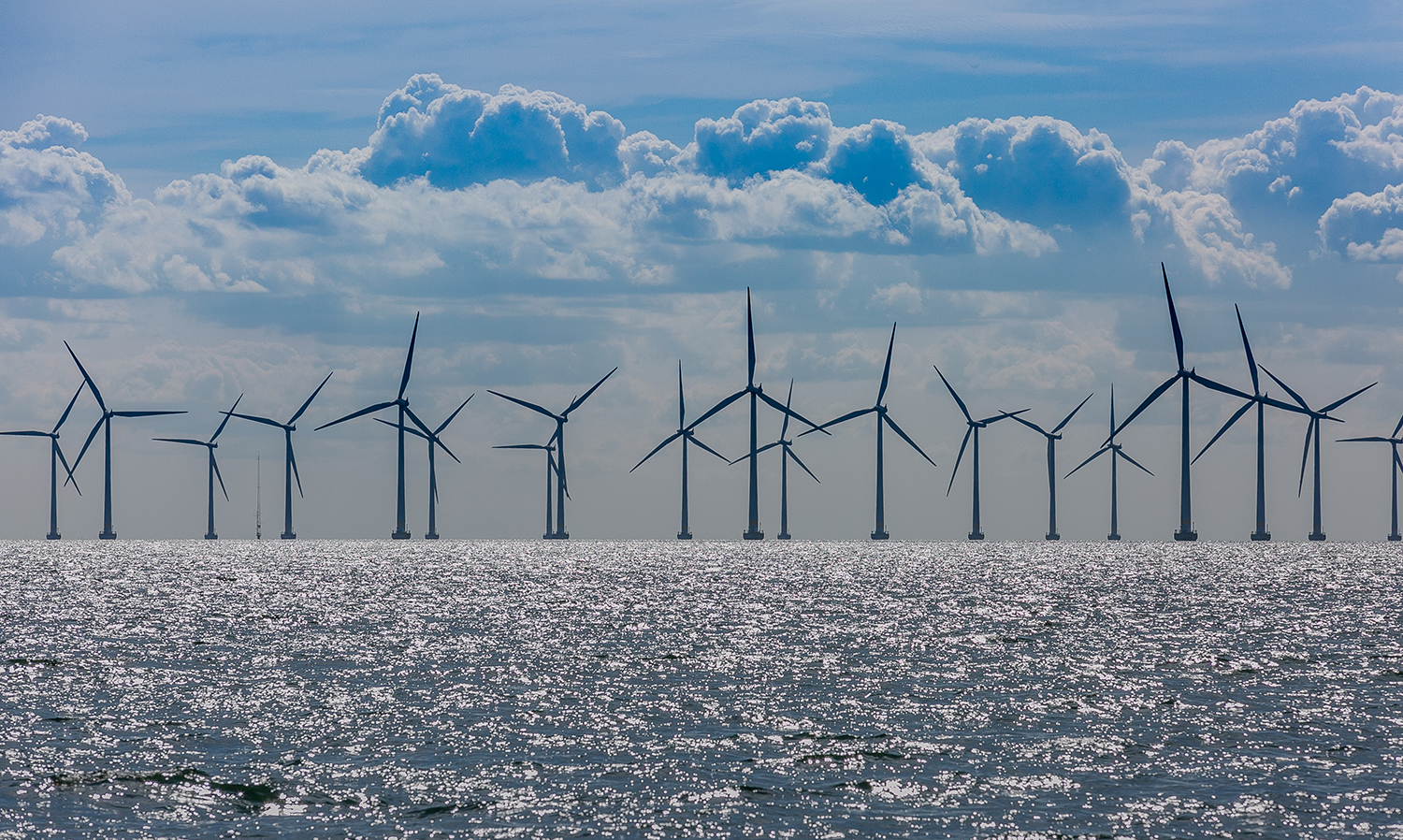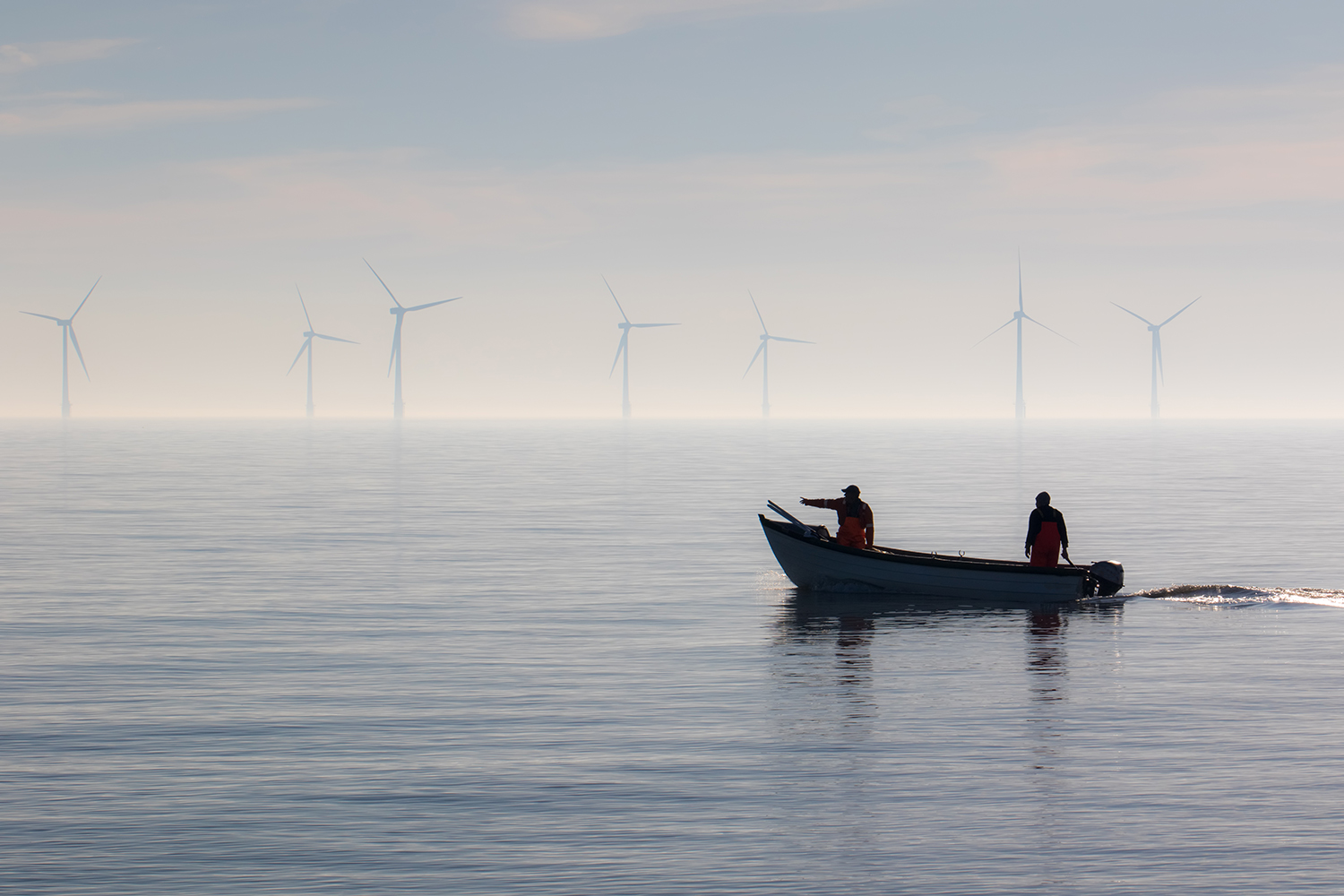Backed by the Rhode Island governor, the fast-moving Revolution Wind farm approval process has the fishing industry feeling cut out

The wheels of the Revolution Wind project keep turning. If ultimately approved, this 84,000-acre, 65-turbine offshore wind farm will be situated off the coast of Rhode Island, between Block Island and Massachusetts’ Martha’s Vineyard, with the 704 megawatts of power generated by its turbines to be shared between Rhode Island and Connecticut. Construction could start as early as June 2024.
In early May, Revolution Wind’s co-developers, Ørsted and Eversource, welcomed Rhode Island Governor Daniel McKee and other officials at the Port of Providence to celebrate the start of turbine component fabrication. McKee lauded the “the jobs of the 21st century and beyond” created by the project and added that Rhode Island was “lucky to be at the forefront of this revolution,” referring to the generation of clean energy, which helps the nation meet its climate goals and positions the state as a base for offshore wind development.
But not everyone was celebrating. Commercial fishermen in the area remain deeply frustrated by the uncertainty of how the turbines will impact their productivity and the long-term impacts they will have on the ecosystem they count on. While discussions on mitigation these concerns have occurred between fishermen and Ørsted and Eversource, the fishermen say those conversations have lacked consideration of equity to those being adversely affected. It leads to a compelling question: Can offshore wind and fisheries co-exist?
A matter of input and control
Chris Lee, a member of the Fisheries Advisory Board (FAB) and director of Sea Fresh USA in North Kingstown, R.I., told the Advocate that the fishing industry is being forced to share the ocean in this way for the first time in history.
“There are boats out now, surveying for Revolution and laying cable,” he noted. “They’re telling fishermen to stay out of certain areas and nothing has even been constructed yet. Most of us recognize the wind turbine construction will happen and that mitigation is the next best thing, as an insurance policy for the industry. But because no one really knows what the risks are, we’re being forced into this backwards and the industry is getting trampled in the process.”
On May 9, after nine hours of consultations between the FAB, the Coastal Resources Management Council (CRMC) and the seafood industry, the CRMC approved a $12.9 million compensation package for Rhode Island fisheries to compensate for losses due to construction and operation of the project over its 30-year lifetime. Attorneys for the FAB had said a more appropriate amount would be $21.6 million.
The CRMC’s vote of approval for Revolution Wind means the project is a step closer to being the third utility-scale offshore wind farm to be approved for construction in the United States. Marie Desautel, attorney for the FAB, said that because the project is in state and federal waters, it requires two different review processes.
A comparison of resource use in shrimp farming, part 3: Energy
“At the state level, at least with respect to the fishermen’s concerns, the CRMC seems to have more control over making sure the fishermen are compensated and state resources are being protected. At the federal level, the state doesn’t have much input, though, and the federal process overrules the state process,” she said.
“Ørsted’s position for this project and others I’ve worked on has been the same – that none of the impacts this project will have are major,” she added. “Their strategy is to ignore and deny the negative aspects of the development, minimize the scope of impact and say that the fishermen aren’t going to be that harmed.”
Todd Guilfoos, a marine resource economist at the University of Rhode Island, said the process for building offshore wind has been devoid of federal regulations that would provide guidelines of how to build responsibly and exclusive of the concerns of the fishing industry.
“There’s really no recourse for industries that are affected by offshore wind,” he noted. “It goes through the Bureau of Ocean Energy Management and gets permitted, but there are no regulatory standards for mitigation funds, for weighing up the environmental costs of development and for avoiding effects on the ecosystem.”
The wind farms have been turned into a political deal instead of something that should be advanced slowly under the constant gaze of science.
Impacts on fisheries
Guilfoos noted that there have been decreases in fish catches near wind turbine farms off the coasts of England and Ireland. While some species might benefit from protection in areas of wind turbines, there’s no data on which species will be harmed or what the impact will be on species already under stress.
“I’m not opposed to offshore wind development, but there has to be a process for the stakeholders who use this space to have a say,” said Guilfoos. “We need to slow down and get some regulations in place first.”
Lee believes the fishing industry will be detrimentally affected by the turbines long after their construction is completed.
“The turbines will occupy more space, so boats won’t be able to fish in those areas and will have to compete for areas already being fished by others,” he said. “There are other questions we can’t answer. Will our insurance premiums go up because we have to fish in different areas? What about our equipment costs? Will we be as safe at sea? Will we be able to fish as we do now, or will we need to incur costs hiring more crew members? No one knows the answers to these and other difficult questions.”
Chris Brown, president of the Seafood Harvesters of America and a commercial fisherman, said the industry doesn’t understand the impact of the turbines one at a time, let alone acres of them.
“The cumulative impacts could be enormous and productivity could be dramatically reduced,” he noted. “We’ve already seen impacts that are dramatic, such as the disaggregation of spawning fish around the wind turbines off Block Island. Before those turbines were electrified, the cod spawning looked really good. Once electrified, we couldn’t catch any cod. We went from catching thousands of pounds to not being able to catch a hundred pounds for the entire season, because the fish were driven off.”
“We’ve learned that living things tend to move away from these projects, or not function in a way that’s normal. And we’re seeing it with the acoustic carpet bombing too, the seismic research they are doing as they tow sleds behind vessels, transmitting signals into the seabed. The noise is profoundly impactful on creatures. It’s reducing yields on scallops and stunning crabs and lobsters. And all this is occurring before they’ve begun construction with the concussive devices that will drive these monopiles into the ocean floor. The wind farms have been turned into a political deal instead of something that should be advanced slowly under the constant gaze of science.”

Leaving a legacy
In a statement, Ørsted-Eversource said “the federal lease area designated by the federal government purposely carved out portions of Cox Ledge from the outset to reduce potential impacts to habitat and fishing activity. That’s why the Ørsted-Eversource lease area for South Fork Wind, Revolution Wind and Sunrise Wind has its odd shape: The carveout is reflected in its ‘pirate ship’ shape, avoiding portions of Cox Ledge.”
It added that it has agreed to a 1-square-nautical-mile spacing across its lease areas. “This is the widest spacing of any offshore wind farm in the world. In addition, the micro-siting of South Fork Wind’s 12 turbines is designed to further minimize potential habitat impacts.”
“We’re committed to maintaining a strong working relationship with all commercial and recreational fishermen who may be affected by a wind farm or wind farm activities in and around a lease area,” it continued. “We believe that good communication is essential to creating understanding between those who provide food for our tables and those who provide electricity for our homes.”
The Ørsted-Eversource statement added that part of its outreach has been the engagement and building of a multi-state network of Fisheries Liaisons and Fisheries Representatives to serve as two-way channels of information exchange, as well as twice-weekly Mariners Briefings.
But Brown and other fishermen aren’t convinced.
“My time on the ocean is fast coming to a close. I don’t want money from developers – I want to leave a legacy, that we’ve restored the health of the ocean. To have a political fiat compelled by intuition instead of hard science come in and do unfathomable, possibly irreversible harm to the ocean, is maddening and it’s very emotional.”
Follow the Advocate on Twitter @GSA_Advocate
Now that you've reached the end of the article ...
… please consider supporting GSA’s mission to advance responsible seafood practices through education, advocacy and third-party assurances. The Advocate aims to document the evolution of responsible seafood practices and share the expansive knowledge of our vast network of contributors.
By becoming a Global Seafood Alliance member, you’re ensuring that all of the pre-competitive work we do through member benefits, resources and events can continue. Individual membership costs just $50 a year.
Not a GSA member? Join us.
Author
-

Lauren Kramer
Vancouver-based correspondent Lauren Kramer has written about the seafood industry for the past 15 years.


